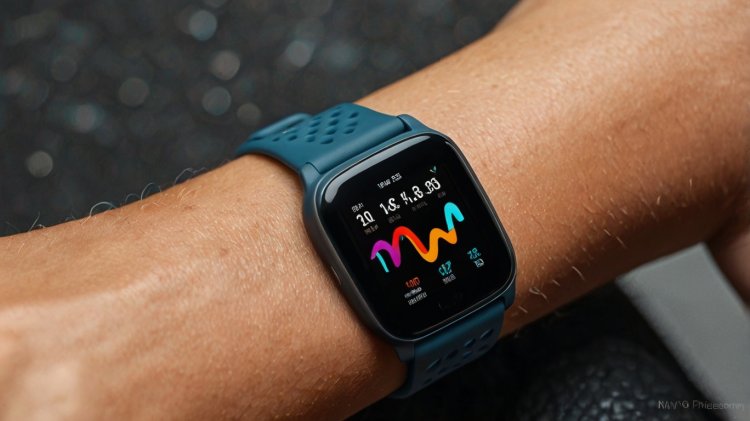Wearable Tech in Healthcare: Revolutionizing Patient Care for a Smarter Future
Explore how wearable technology is transforming healthcare. Learn about its benefits, challenges, and applications like fitness trackers, glucose monitors, and wearable ECGs. Discover how these devices empower personalized patient care, chronic disease management, and future innovations in the healthcare industry.

Wearable Technology in Healthcare: Revolutionizing Patient Care in 2024
The integration of wearable technology into healthcare has marked a transformative shift in how medical care is delivered and received. With the global wearable technology market projected to reach $69.2 billion by 2028, it’s clear that this innovation is redefining personalized healthcare. From fitness trackers to advanced biosensors, wearable devices are empowering patients, enhancing healthcare efficiency, and opening new doors for preventive care. This comprehensive guide explores the evolution, benefits, challenges, and future potential of wearable technology in healthcare.
What is Wearable Technology in Healthcare?
Wearable technology in healthcare encompasses devices worn on the body that collect health-related data for analysis by healthcare professionals, researchers, or even the users themselves. These devices, including smartwatches, fitness trackers, blood pressure monitors, and glucose meters, serve as tools for real-time health monitoring and telehealth services. They track metrics such as heart rate, glucose levels, blood pressure, and more, providing actionable insights into a user’s health.
The Importance of Wearable Health Monitoring Devices
Wearable technology has transcended its initial role as a step tracker to become an integral part of modern healthcare. These devices facilitate:
-
Continuous Health Monitoring: Particularly vital for chronic conditions, wearable tech ensures uninterrupted observation of health metrics, enabling early detection of abnormalities.
-
Accurate Data Collection: Unlike traditional periodic check-ups that rely on patient-reported data, wearables provide objective, real-time insights.
-
Preventive Healthcare: By leveraging historical data and real-time monitoring, wearable devices allow healthcare providers to predict potential health issues and intervene early.
Integrating Wearable Technology with IoMT Solutions
What is IoMT?
The Internet of Medical Things (IoMT) refers to interconnected medical devices, software, and IT systems that share and analyze health data. This network enables seamless communication among devices, fostering proactive and personalized care.
How To Integrate Wearable Technology With IoMT Solutions?
Integration involves:
-
Robust Cybersecurity: Ensuring patient data security with encryption and strict access controls.
-
Advanced Analytics and AI: Utilizing AI to analyze data trends and provide actionable insights.
-
User-Friendly Interfaces: Equipping patients with intuitive platforms to access and understand their health data.
Benefits of Wearable Technology in Healthcare
1. Real-Time Health Monitoring
Wearable devices continuously track vital metrics, providing instant alerts for abnormalities, such as irregular heartbeats or glucose spikes, which can trigger timely interventions.
2. Increased Access to Data
Automated health data collection eliminates the need for manual tracking and provides healthcare professionals with comprehensive datasets to analyze trends and improve patient outcomes.
3. Early Detection of Health Issues
Wearables can identify subtle health changes, allowing providers to address potential problems before they escalate into critical conditions.
4. Support for Chronic Disease Management
Patients with chronic conditions can benefit from consistent monitoring, enabling timely adjustments to treatment plans and reducing the need for frequent in-person visits.
5. Personalized Healthcare Plans
Continuous data streams from wearables enable healthcare providers to design tailored treatment plans, ensuring that interventions align with individual health needs.
6. Reduced Healthcare Costs
By minimizing hospital visits and enabling remote consultations, wearable technology lowers the overall cost of healthcare delivery.
Challenges of Wearable Technology in Healthcare
1. Data Privacy Concerns
The vast amounts of sensitive data collected by wearables necessitate stringent cybersecurity measures to prevent breaches and unauthorized access.
2. Accuracy and Reliability Issues
Inaccurate readings due to hardware or software limitations can undermine trust in wearable devices, necessitating continuous improvements in sensor technology.
3. High Costs
The advanced technology in wearable devices often comes with a hefty price tag, limiting accessibility for many consumers.
4. Integration Challenges
Seamless integration with existing healthcare systems requires overcoming interoperability issues among devices from different manufacturers.
Top 5 Examples of Wearable Technology in Healthcare
1. Blood Pressure Monitors
These devices, such as A&D Medical’s Essential Manual Inflate Monitor, provide real-time blood pressure readings, enabling users to track and manage their cardiovascular health.
2. Glucose Monitoring Devices
Products like the Abbott Freestyle Libre 2 offer real-time glucose monitoring, empowering individuals with diabetes to manage their condition more effectively.
3. Wearable ECG Monitors
Devices like KardiaMobile and Apple Watch ECG functionality allow users to monitor their heart health and detect irregularities.
4. Fitness Trackers
These devices track physical activities, heart rate, sleep patterns, and more, helping users maintain an active and healthy lifestyle.
5. Integrated Activewear
Smart clothing, like Ralph Lauren’s sensory shirt, combines comfort with functionality, monitoring posture and movement to prevent injuries and optimize fitness routines.
Future Trends and Innovations
Emerging Technologies
The future of wearable technology includes innovations such as augmented reality integration, advanced machine learning algorithms, and blockchain for secure data management. These technologies promise to enhance the capabilities and reliability of wearable devices.
Market Leaders and Disruptors
While established brands like Apple and Garmin continue to lead, new entrants like Asus and Motorola are pushing the boundaries with innovative health-focused features.
FAQs
Can wearable devices help in emergencies?
Yes, wearable devices equipped with GPS and emergency alert systems can provide real-time assistance by notifying healthcare providers or emergency services during critical situations.
Can wearable devices aid in managing large patient groups?
Wearables allow healthcare providers to monitor multiple patients remotely, leveraging AI to analyze data trends and deliver efficient care to large populations.
How can data from wearable devices be integrated securely into existing systems?
Data integration requires adherence to healthcare regulations, robust encryption, and advanced security protocols to safeguard patient information.
Conclusion
Wearable technology in healthcare represents a groundbreaking advancement, offering unprecedented opportunities for proactive health management and personalized care. Despite challenges, continuous innovation and strategic integration with IoMT solutions are driving the industry forward. As wearable devices evolve, they hold the promise of transforming healthcare delivery, making it more efficient, accessible, and patient-centric.









